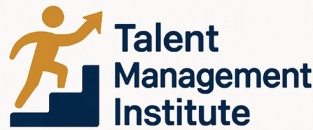
Understanding the Human Capital Strategist
What is the Role of a Human Capital Strategist?
In the world of modern organizations, the role of a human capital strategist is more crucial than ever. This strategic position involves a comprehensive approach to managing and optimizing the human element of a business to drive organizational success. But what exactly does a human capital strategist do? A human capital strategist is responsible for aligning the workforce with the company’s business strategy to achieve higher levels of performance and a competitive edge. With a focus on talent acquisition and management, they oversee the recruitment process, ensuring that the right talent is brought into the organization and developed appropriately. To excel in this role, these strategists must work closely with senior leaders to ensure that talent management aligns with the broader business goals. This involves developing strategic processes for employee recruitment and engagement, which are pivotal to sustaining the performance and growth of an organization. Additionally, an effective human capital strategist provides valuable insights into organizational performance through the strategic use of data. By leveraging human resource data analytics, they can offer solutions to improve processes, predict future trends, and facilitate digital transformation within the company. Maintaining employee motivation is another critical aspect of their responsibilities. Creating an environment that fosters employee engagement and developing strategies that encourage a culture of continuous learning are vital to building a resilient workforce. To understand their scope of impact further, you might want to explore how unlocking the potential of absolute works jobs can dramatically shift talent management practices within a company. For more insights, explore the potential of absolute works jobs in the talent management domain. Overall, a human capital strategist’s role is complex and multifaceted, requiring them to navigate and manage various aspects of human capital to ensure the organization's adaptability and sustained success.Aligning Talent with Business Goals
Strategic Alignment of Talent and Business Objectives
In the dynamic landscape of modern organizations, aligning talent with business goals is a critical function of human capital management. A human capital strategist plays a pivotal role in ensuring that an organization’s talent strategy is not only aligned with its business strategy but also adaptable to changing market conditions. This alignment is essential for achieving organizational performance and gaining a competitive advantage.
One of the primary responsibilities of a human capital strategist is to bridge the gap between human resources and strategic business objectives. This involves a thorough understanding of the organization’s goals and a keen insight into how human resources can be leveraged to meet these goals effectively. By aligning talent management processes with business objectives, organizations can enhance employee engagement and drive performance.
Effective Talent Management Strategies
To align talent with business goals, a human capital strategist must develop effective talent management strategies. These strategies encompass various aspects of human resource management, including talent acquisition, recruitment processes, and employee development. By focusing on these areas, organizations can ensure that they have the right people in the right roles, contributing to their overall success.
- Talent Acquisition: A strategic approach to talent acquisition is crucial for attracting and retaining top talent. This involves understanding the skills and competencies required for different roles and developing a recruitment process that identifies candidates who align with the organization’s values and objectives.
- Performance Management: Implementing a robust performance management system helps organizations track employee performance and identify areas for improvement. This process ensures that employees are aligned with business goals and are working towards achieving them.
- Employee Development: Continuous learning and development opportunities are essential for building a resilient workforce. By investing in employee development, organizations can enhance their human capital and prepare for future challenges.
For those interested in the financial aspects of talent management, understanding the talent manager salary insights and trends can provide valuable information on how compensation strategies can align with organizational goals.
Developing a Resilient Workforce
Building a Workforce that Thrives
In today's rapidly evolving business environment, organizations require a workforce that not only performs effectively but also adapts swiftly to change. Developing a resilient workforce is a crucial aspect of talent management that a human capital strategist focuses on. It's about preparing employees to face challenges head-on and equipping them to help the organization achieve its strategic business goals.
One of the key components in developing a resilient workforce is understanding the dynamics of employee engagement. When employees are engaged, they are more likely to contribute positively to organizational performance. This means investing in talent acquisition processes that align with long-term business strategies and utilize resource management techniques effectively.
Training and development opportunities play a vital role in this process. By fostering a culture of continuous learning, an organization can ensure that its staff remains committed and equipped with the skills needed to meet both current and future demands. Human resources teams are instrumental in identifying these opportunities and implementing programs that align with the company’s strategic objectives.
Moreover, resilience in the workforce is bolstered by nurturing a culture where feedback is constructive, and employees are encouraged to voice their ideas and concerns. This open communication channel can lead to innovative solutions that drive not only employee engagement but also organizational success.
In the United States, many organizations are turning to strategic initiatives that include HCM and resource management technologies, providing employees with the tools they need to perform efficiently. By leveraging these technologies, companies can keep talent aligned with evolving business needs, ensuring a competitive advantage in their respective industries.
Thus, a human capital strategist's role is pivotal in solidifying a resilient workforce. Through strategic planning and management practices, they can create a robust organizational structure that not only withstands pressures but thrives in times of change.
Leveraging Data for Talent Insights
Harnessing Metrics for Workforce Effectiveness
The essence of a human capital strategist lies in their ability to leverage data intelligently, transforming these insights into actionable talent management strategies. In modern organizations, the importance of aligning human resources with business objectives cannot be overstated. A capital strategist must be adept at analyzing data from various sources, such as employee performance metrics, recruitment process outcomes, and organizational resources, to refine their talent acquisition strategies.
Using data-driven insights helps in making informed decisions that enhance organizational performance. Analytics tools allow strategists to assess employee engagement levels, identify skill gaps, and formulate strategies that align with business goals. In this way, data becomes a pivotal tool in resource management, providing a competitive advantage by enabling effective human capital management.
Moreover, within this framework, capital strategies are optimized by continuous analysis and monitoring. Implementing sophisticated performance tracking and measurement processes ensures that the workflow remains agile and responsive to market changes. This strategic vantage point is integral to supporting not just the immediate recruitment needs but also sustainable talent retention and development, fostering a resilient workforce ready to adapt to digital transformations and evolving market demands.
Navigating Change and Transformation
Guiding Through Organizational Change
In today’s fast-paced business environment, change is inevitable. A human capital strategist plays a crucial role in helping organizations navigate these transformations effectively. Whether it’s a shift in business strategy, a digital transformation, or adapting to new market demands, the strategist ensures that the organization’s talent is aligned with its evolving goals.
Managing change requires a strategic approach to talent management. It involves not only recruiting the right talent but also ensuring that current employees are equipped to handle new challenges. This might include reskilling initiatives or redeployment strategies to optimize human resources effectively. The strategist must work closely with senior management to ensure that the recruitment process is aligned with the organization’s strategic objectives.
Implementing Strategic Talent Initiatives
To successfully navigate change, human capital strategists must implement strategic initiatives that enhance organizational performance. This includes fostering employee engagement and creating a culture that supports innovation and adaptability. By doing so, organizations can maintain a competitive advantage in the marketplace.
Effective human resource management is key to this process. It involves leveraging data-driven insights to understand employee performance and identify areas for improvement. By utilizing these insights, organizations can make informed decisions about talent acquisition and development, ensuring that they have the right resources in place to achieve their business goals.
Building Resilience Through Transformation
Ultimately, the goal of a human capital strategist is to build a resilient workforce capable of thriving amidst change. This involves not only aligning talent with business goals but also fostering a culture of continuous learning and development. By investing in their employees, organizations can ensure that they are prepared for whatever challenges the future may hold.
In conclusion, navigating change and transformation is a complex process that requires a strategic approach to talent management. By aligning talent strategies with organizational goals, human capital strategists can help organizations achieve sustainable success in an ever-changing business landscape.
Fostering a Culture of Continuous Learning
Creating a Learning-Driven Environment
In the dynamic landscape of modern business, fostering a culture of continuous learning is not just a strategic advantage but a necessity. Human capital strategists play a pivotal role in embedding this ethos into the organizational fabric. By aligning learning opportunities with business goals, they ensure that employees are not only equipped to meet current demands but are also prepared for future challenges.
Integrating Learning into Talent Management
Effective human capital management involves weaving learning strategies into the broader talent management framework. This integration helps in enhancing employee engagement and improving organizational performance. By leveraging data and insights, strategists can identify skill gaps and tailor development programs that align with the strategic goals of the business. This approach not only boosts employee performance but also strengthens the organization’s competitive advantage.
Empowering Employees Through Continuous Development
Empowering employees with continuous learning opportunities is crucial for nurturing a resilient workforce. By offering diverse learning pathways, from formal training sessions to informal knowledge sharing, organizations can cater to various learning preferences. This process encourages employees to take ownership of their development, fostering a culture of self-improvement and innovation.
Utilizing Technology for Enhanced Learning
In the era of digital transformation, technology plays a crucial role in facilitating continuous learning. Human capital strategists can utilize digital tools and platforms to provide flexible and accessible learning solutions. These technologies enable personalized learning experiences, making it easier for employees to acquire new skills and knowledge at their own pace, thus enhancing overall organizational performance.
Encouraging a Growth Mindset
A growth mindset is essential for continuous learning. Human capital strategists can cultivate this mindset by promoting an organizational culture that values curiosity, experimentation, and learning from failures. Encouraging employees to view challenges as opportunities for growth can significantly enhance their adaptability and resilience, key components for thriving in a rapidly changing business environment.













